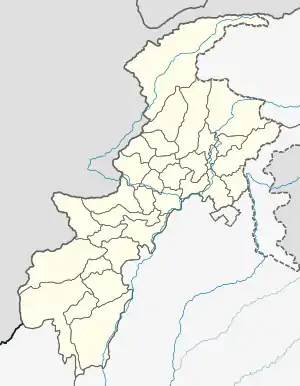Mankiyali language
Mankiyali is an endangered Indo-Aryan language of Khyber Pakhtunkhwa, northern Pakistan. It is spoken by a small community sometimes referred to as the Trawara[1] in the secluded village of Danna (or Dana) located in the Bandi Shungli union council of Mansehra District.[2] There are also some speakers scattered in the neighbouring villages of Damaka, Guldar, Arghaniya, Chamrasi and Shoshni.[3] The whole community has been reported to be bilingual in Hindko, the language of wider communication in the area.[2] The language is still being passed on to the next generation, but overall it is losing ground to Hindko.[4] The first study documenting the existence of the language was published only in 2015. The name Mankiyali is of recent origin, having been coined by members of the community to replace the older terms Tarawara and Tarawari, which are now seen as stigmatising.[5]
| Mankiyali | |
|---|---|
| Native to | Pakistan |
| Region | Mansehra District, Khyber Pakhtunkhwa |
| Ethnicity | Trawara |
Indo-European
| |
| Language codes | |
| ISO 639-3 | nlm |
| Glottolog | mank1256 |
 Mankiyali  Mankiyali | |
| Coordinates: 34°28′56″N 72°57′05.3″E | |
Mankiyali is not mutually intelligible with any of the surrounding languages. Lexical similarity tests have revealed that it shares a little over a third of its core vocabulary with the local varieties of Hindko and Gojri, and a slightly higher percentage (41–42%) with the Dardic languages Gowro and Bateri.[6] The somewhat higher similarity with Bateri could indicate a common origin, which would be consistent with the oral traditions of the community.[7]
Mankiyali has been influenced by Hindko and Gojri, particularly in the development of phonemic tone: a preliminary analysis indicated that its tonal system is of the Punjabi type, shared with Hindko and Gojri and contrasting with the systems found in northern Dardic languages.[8] The voiced aspirates have been lost, conditioning a low rising tone on the following vowel.[9] There are contrasting dental (/ts/) and palatal (/tʃ/ /tʃʰ/) affricates.[10]
References
- Pronounced [t̪rɑʋɽɑ].
- Anjum & Rehman 2015, p. 177.
- Anjum 2016, pp. 2–3.
- Anjum & Rehman 2015, pp. 177, 179.
- Munshi 2017.
- Anjum & Rehman 2015, pp. 179–81. The lexical similarity percentages are as follows: 34% with Ushojo, 41% with Gowro, 42% with Bateri, 39% with Hazara Gojri and 36% with Sherpur Hindko.
- Anjum & Rehman 2015, p. 181.
- Anjum & Rehman 2015, pp. 181, 185.
- Anjum & Rehman 2015, pp. 182, 185.
- Anjum & Rehman 2015, pp. 182–83.
Bibliography
- Anjum, Uzma (2016). Language Shift and the Speech Community: A Sociolinguistic Study of Tarawara Community in Bandi Shungli (PhD). National University of Modern Languages, Islamabad.CS1 maint: ref=harv (link)
- Anjum, Uzma; Rehman, Khawaja (2015). "A First Look at Mankiyali Language: An Endangered Language". Journal of Asian Civilizations. 38 (1): 177–90. ProQuest 1816873650.CS1 maint: ref=harv (link)
- Anjum, Uzma; Kiani, Zafeer Hussain; Khan, Qaisar (2018). "Gender Variation in Language Use in Family: A Study of an Endangered Language Spoken in North Pakistan" (PDF). Kashmir Journal of Language Research. 21 (1): 123–132. ISSN 1028-6640.CS1 maint: ref=harv (link)
- Munshi, Sadaf (2017). Request for Change to ISO 639-3 Language Code 2017-028 (Report).CS1 maint: ref=harv (link)